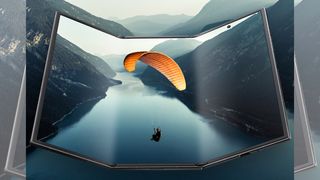Samsung Galaxy Phones

The Samsung Galaxy series is arguably the best-known line of phones after Apple's iPhones. That said, it encompasses more than just phones, with tablets, watches, earbuds and laptops all falling under the South Korean firm's Galaxy brand.
As far as smartphones go, the series is currently helmed by the Samsung Galaxy S smartphone series and the Samsung Galaxy Z foldable series, the company's most premium models.
Samsung's Galaxy phones run a gamut of price ranges, with the Galaxy A series firmly in budget territory, while the Galaxy S23 Ultra and Galaxy Z Fold 4 are as expensive as phones get.
Samsung usually refreshes its phones multiple times a year. The A-Series line will see multiple launches throughout the year as Samsung tries to hit multiple price points. On the flip side, the flagship lines, the Galaxy S and Z series, get a single annual refresh. The S series is typically the first and ends up being updated in the first few months of the year, normally around the Mobile World Congress in February or March. The Z series typically gets updated in August.
Explore Samsung Galaxy Phones
Latest about Samsung Galaxy Phones

The Samsung Galaxy Z Trifold could be the perfect mobile movie machine – and I can’t wait to try it out
By Jamie Richards published
The Samsung Galaxy Z Trifold could become the device of choice for watching movies on the go, with a larger screen than any tablet-style folding phone before it

Today's best Samsung Galaxy S25 deals: free devices, cheap plans, upfront discounts, and more
By Alex Whitelock published
This week's best Samsung Galaxy S25 deals could see you taking home one of these stunning devices for free.

The Galaxy Z TriFold has a neat PC trick that could justify its price tag
By David Nield published
The Galaxy Z TriFold will support the Second Screen feature in the same way that Samsung's Android tablets do.

5 rumored Samsung Galaxy S26 upgrades – from chipset surprises to magnetic charging
By Axel Metz published
The Samsung Galaxy S26 line is expected to debut in early 2026 – here are the biggest rumored upgrades we've heard so far.

Motorola just teased a new foldable to rival the Samsung Galaxy Z Fold 7
By Hamish Hector published
Motorola has big plans for CES, and that could include a brand new foldable.

The Samsung Galaxy S26 might finally be getting its version of MagSafe – here are 8 accessories to expect
By James Rogerson published
Eight Samsung Galaxy S26 series accessories have leaked, pointing to a focus on magnets and faster wireless charging.

With the Samsung Galaxy Z Trifold on the way, Apple’s rumored iPhone Fold needs to hit shelves soon
By Jamie Richards published
Cupertino needs to step on it in 2026

Design and chipset details for the Galaxy S26 series have leaked early
By David Nield published
We may now know more about what the Samsung Galaxy S26 phones look like, and how they'll be powered.
Sign up for breaking news, reviews, opinion, top tech deals, and more.

